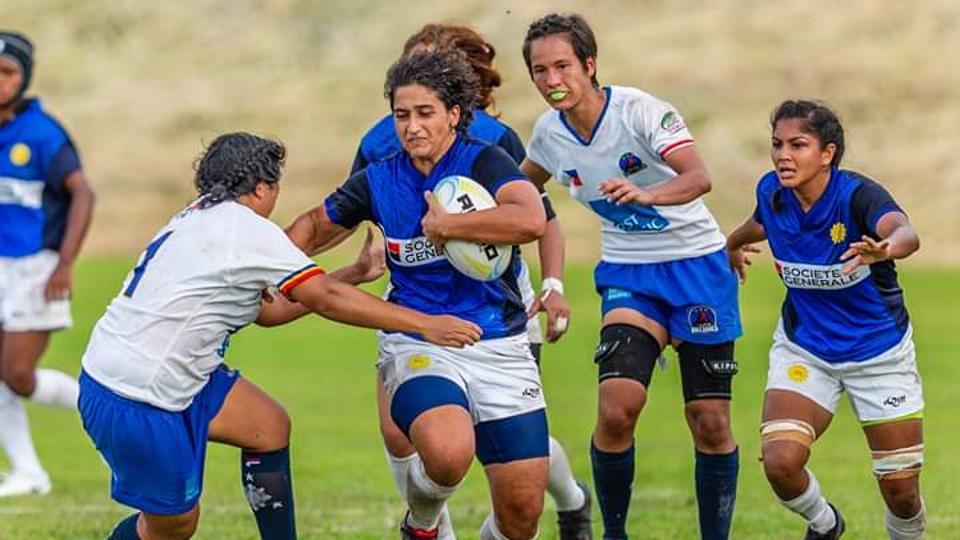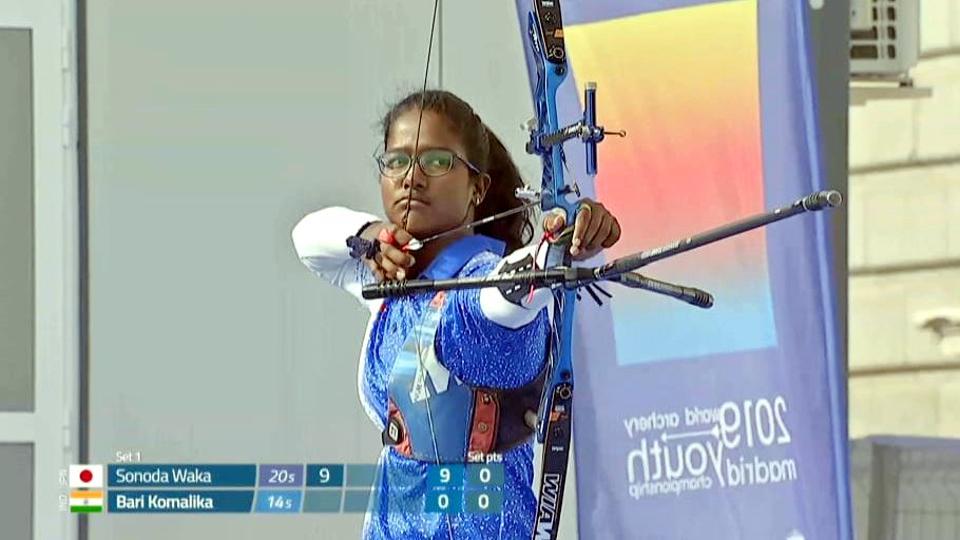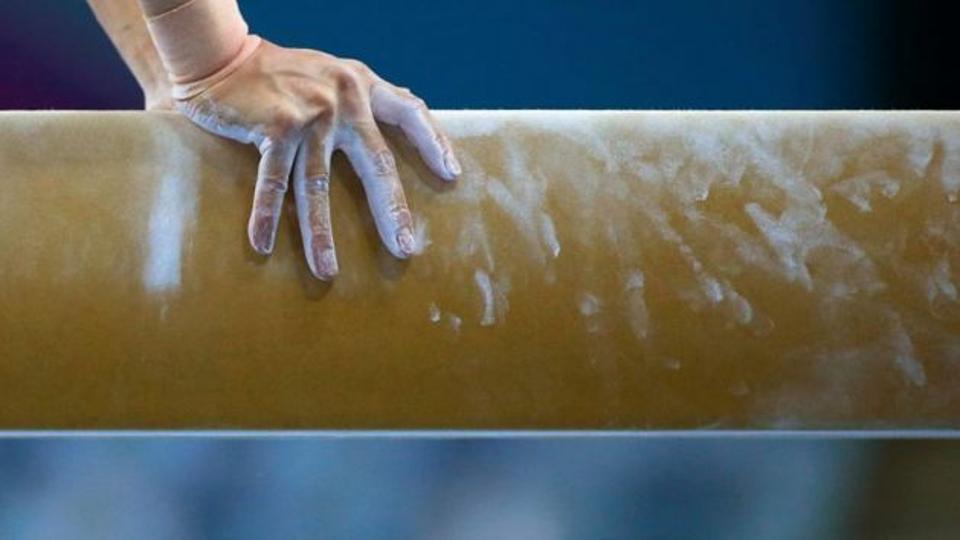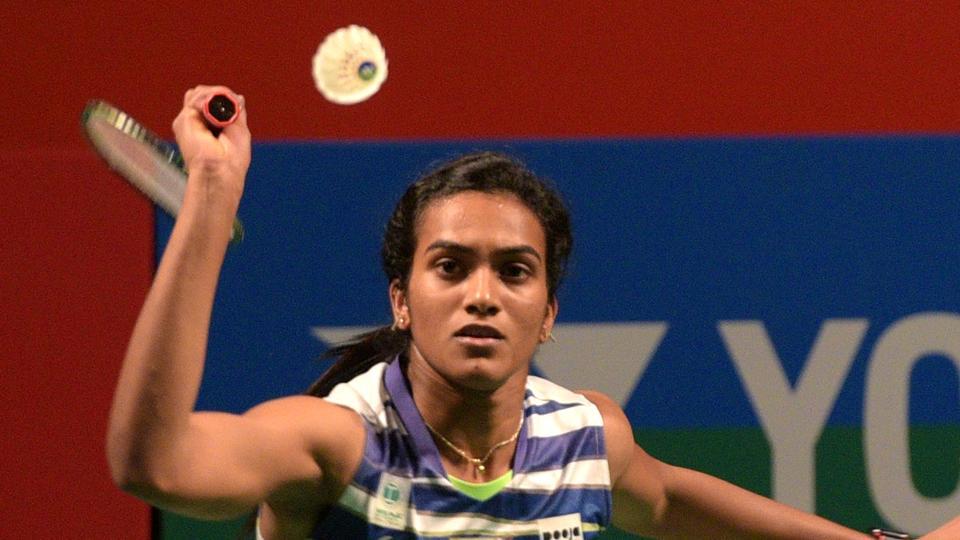
While most of India was cheering the Men in Blue through to the semi-finals of the Cricket World Cup, a video that went viral showed a bewildered Hupi Majhi, 24, crying, in Manila. She couldn’t believe their team had won in the Asia Rugby Women’s Championship Division 1.
It had been a tense 80-minute match against the higher-ranked Singapore, with the last 15 minutes being the most crucial. Right at the end, India’s Sumitra Nayak, 19, delivered a successful penalty kick. Now all India had to do was ensure that Singapore didn’t overturn the score in the last three minutes.
Team captain Vahbiz Bharucha, 26, recalls hearing the 80th minute whistle and collapsing on the field, looking up at the sky, her mind blank.
“It took a while for it to sink in that we had actually won our first title,” she says. “That didn’t last long; in seconds, all the girls had jumped on for a giant pile-on.”
- The overall objective in rugby is to score more points than the opponent in a stipulated time frame allotted per team. The players aim to kick, carry or pass the ball to the opponents’ goal line and score as many points as possible in the process. These points can be scored through a try, conversion, penalty kick or drop goal.
- Try: 5 points are awarded if the ball hits the ground over the opponent’s goal line.
- Conversion: After each try, the team gets a free kick, with the chance to win an additional 2 points if they get the ball through the opponent’s goal posts.
- Penalty kick: If a team member breaks a rule during play, the opposing team gets a conversion worth 3 points if it goes through.
- Drop goal: 3 points are awarded if a player first drops the ball to the ground, lets it bounce and then kicks it through the opponents’ goal post.
- There are two formats of the game 7-a-side (7s) and 15-a-side (15s).
- The pitch size stays the same (100m x 70m) but the players are 7 and 15 a team respectively.
- The duration of the game is also different — 7 minutes a side in the first format, 40 minutes a side in the 15s.
- The 7s tournament is like the T20 format in cricket, while the 15s is a bit like a Test match.
- 7s is the form of rugby played at the Olympics, 15s is the format in the rugby world cups.
- Indian 7s women’s team has no world ranking, but is ranked 10th in Asia. The 15s women’s team is 47th in the world, 6th in Asia.
The Indian women’s rugby team earned their bronze in a nail-biting 21-19 victory in June. It was only their fourth international match in the 15-a-side version of the brutal contact sport. Just last year, when they made their 15s debut, they had lost 30-5 to the same Singapore team.
“We’ve come a long way, from being a bunch of women just trying to wrap our heads around what we are supposed to do with this egg-shaped ball — to a bunch of winners on the international stage,” Bharucha says.
Gone are the days when the players were intimidated by the tough, high-contact, aggressive sport. “When we first started playing, we were all scared of how intense it was. It looked like everyone on field was wrestling but with a ball,” says Majhi.
“My mother’s first reaction when I told her I’d been selected for the national team was fear that I would injure myself or break an arm,” says Bihar’s Sweety Kumari, 19. “But then I told her about the many other fearless women playing the game and that I believed I could play as well as them.”
For Nayak, the fears did come true and a shoulder injury suffered on the field kept her from playing for about three months in 2013. “When the doctor told me I wouldn’t be able to play for months, that’s when I actually cried,” she says.

Rugby is relatively new to India. The men’s team is a little over two decades old, set up just after the Indian Rugby Football Union (IRFU) was formed in 1998. It was only in 2001 that they were admitted into the International Rugby Board (IRB); they are currently ranked 86th on the 105-country world rankings for the game.
India’s national women’s rugby team was formed in 2009. They played the Rugby Sevens or seven-a-side game (sort of the T20, with the 15s being like the limited overs format in cricket).
The 15s is the more competitive format of the game, and the women started playing it last year. “The 15s is more physically demanding and needs careful strategising, which the women have been excelling at,” says Nasser Hussain, former captain of the national men’s team and general manager of the IRFU.
In March this year, IRFU brought legendary South African player Naas Botha on board as head coach for the men’s and women’s teams. “I think some of the women have it in them to become international players but their biggest weakness was getting confident about their moves,” Botha says.
- Rugby was played by the British in India in the 1870s. The hub was then Calcutta; there were no Indian players. The game remained confined to elite clubs across the country.
- The Indian national rugby team was created in 1998 and admitted into the International Rugby Board in 2001.
- The Indian women’s rugby 7s team made its debut in the Asia Rugby Sevens Series of 2009.
- India’s first win in women’s rugby came against Korea, 22-7, at the Asian Games 2010 in China, where they eventually finished 11th.
- The women’s 15s team made its international debut in Singapore in 2018.
- Their first 15s win was a 21-19 victory against Singapore at the Asia Rugby Women’s Championship Division 1 in Manila, in the Philippines, in June.
In Asia, 32 countries have national rugby teams. Only seven have a women’s 15s team — Hong Kong, Japan, China, Kazakhstan, the Philippines, Singapore and India.
The Indian women were first introduced to the format in a national tournament organised by IRFU in 2016. “The union realised that now we had enough players to try the 15s,” says team captain Bharucha. “We had the numbers, all we needed was the right training, so we could start playing international matches.”
That meant increased stamina — in a 15s game, players are on the field for 40 minutes at a stretch; it also meant training for greater endurance and strength because the 15s involves a lot of tackling. Regular training routines began to involve a daily mix of up to four hours of running, cycling, swimming and cardio training to push their bodies to develop muscle, stamina, strength and overall fitness for the game.
It helped that some of the women had been playing the relatively unusual game since they were children. Seven of India’s current national squad of 26 are from Odisha — five from just one institute, the Kalinga Institute of Social Sciences, or KISS. A residential institute for tribal children, KISS has had a women’s 7s rugby team since 2007.
There are over 120 rugby clubs and around 800 schools affiliated to state and district associations, with competitive rugby being played across 24 states. These clubs compete against each other to play for state-level championship and IRFU then organises national camps (since 2018, for the 15s women’s team) where players compete for a spot.
The youngest on the current national team is Parbhati Kisku, 18, a student at KISS. Kumari was named best player at the Asia Sevens Trophy in Brunei last year for her high score of 10 tries. The eldest is Sangeeta Bera, 36, a policewoman from Kolkata who had a son in 2015, took a break from the game, and returned to rugby last year.
“Training after having a child is hard because you have to first shed all the weight you gained and then train for stamina so you can last 80 minutes in the field,” says Subhalaxmi Barik, 30, a forest guard in Odisha who also had a son, five years ago. Bharucha, a physiotherapist, and computer engineer Neha Pardeshi, 25, are both from Pune. Most of the players have kept their day jobs, since rugby generates little by way of income, in India.
Some states do award players with prize money for representing the country, others try to offer government jobs. “One player from Bihar got about Rs 6 lakh after an international game last year. We are currently in talks with the Odisha government to provide jobs to national-level players,” Hussain says.
The central government currently does nothing to promote the sport. “We don’t have a single dedicated rugby field in the country and are always at the mercy of other sporting associations,” Hussain says. “We are hoping to build a rugby centre in Odisha with help from the state.”
Botha’s aim, for now, is to try and help the women’s team register for at least 8-10 international games a year, so they can “master their moves and hone their skill”.
Now he is still scouting for more players, looking for taller, stronger players as well. “We are one of the smallest in build in the international matches, “explains Hussain. “But we can change that into an advantage by being less confrontational and faster on the field.”
FIVE OF THE STARS ON THE TEAM

‘I like inspiring other girls to play too’
Shikha Yadav, 20, A PE student from Delhi, started playing rugby at 17, as a way to channel her aggression. “I had played badminton and kabaddi through school, but nothing gave me the release that rugby did,” she says. “Some people are just cut out for contact sports and I am one of them. I like that this game is not all brawn, but about the brain as well.”
Her parents, who run a family business, have been supportive from the start. They watched videos online to try and understand the game. When she returned home with a medal after her first international match last month, they threw a big party.
‘I find the contact sport thrilling’

Vahbiz Bharucha, 26, a physiotherapist from Maharashtra comes from a long line of wrestlers, and her father always encouraged her to go out with her brothers and play. “That’s how I got into handball and wrestling,” she says. When she was introduced to rugby in school, it was “like wrestling in motion”.
“I’m a team player and getting to play a contact sport with a team was thrilling,” Bharucha adds.
Most of her physiotherapy patients have no idea about her other life. “If I end up talking about rugby, I usually have to start by explaining that women play too; sometimes I have to tell them what rugby is,” she says, laughing.
As captain of the national team, she feels her biggest responsibility is morale, since they are so new to the game. “We are people from different corners of India, with different playing styles, bound by our blinding love for the sport; so tempers do flare, misunderstandings do happen and sometimes we end up having too much fun as well. It’s up to me then to ensure we don’t lose focus.”
‘I hate our non-practice days’

Sumitra Nayak, 19, a teacher-in-training from Odisha saved the day with her last minute penalty kick at the Championship in Manila and sealed the bronze for the team. Sumitra was raised by a single mother who worked as a domestic help to make ends meet.
“In 2007, I was living and studying at KISS when the boys’ rugby team went to England and became U-13 world champions. That really inspired us,” she says.
Playing on international grounds was terrifying too, she says. The opponents were bigger, stronger and more intimidating. “When we won, we were happy. But when I came back to my college, and I saw people waiting for us with garlands and our names in the newspapers, that’s when we realised that this was really a big deal,” she says. “Rugby has given all my struggles a direction and even to this day I hate our weekly no-practice days.”
A mom, forest guard, a sportsstar

Subhalaxmi Barik, 30, is a forest guard from Odisha. When she is not running with a rugby ball, she is tackling smugglers and poachers in the Chandaka forest, or tending to her five-year-old son, Sushant. “My sleep schedule never really returned to normal after my child was born, but what was worse was that after pregnancy, I weighed 75 kg and I was just not fit enough to play,” she says.
She walked 15 km and trained at a gym for another four to five hours a day to lose 23 kg in six months and get back into playing shape. She generally trains with her father and her brother, Shakti Barik, a powerlifter and Commonwealth Games gold medallist.
Rugby gives her brute strength and high endurance that help her in her job, she says. Meanwhile, her high-risk job keeps her on her feet, sometimes being chased by wild elephants too, which has taught her to be fearless, a trait that helps her on the field.
The only thing she hasn’t been able to master is dealing with the anxiety of leaving her son at home when she heads out of town to play. “He always falls sick when I am away and how much can a mother do over video call?” she says.
‘My parents are so proud’

Hupi Majhi, 24, a history graduate from Odisha and a Santhal tribal, was eight when she moved to Bhubaneshwar to study at the Kalinga Institute of Social Services boarding school. “Initially, I only spoke only Santhali, not even Odiya, and I felt so out of place that I considered running away,” she says. “I am so glad I held on till I was introduced to rugby.”
Majhi is the first person from her village to have a career in sport. Most women don’t finish school, are married by the age of 18, but her sister’s husband insisted she be allowed to move to Bhubaneswar to study at KISS.
“I grew to love the game and it made me so much more confident to know I could excel at something,” she says.
Now not just her parents but the entire village is proud of the small-framed girl who is one of the fastest on the team. “A high point for my folks was when I took my first flight. They insisted on video-calling me throughout, wanting to see what the inside of an airplane looks like,” she says. “My whole village welcomed me home with garlands after our first international game last year.”

Must See
-


OTHER SPORTS
/ 6 years agoYashaswini sheds doubts on the ski slope, wins gold for Tokyo spot
Shooting is all about that unwavering focus, a sort of tunnel vision to excel...
By Espnstaff -


OTHER SPORTS
/ 6 years agoGymnastics trials put off due to simmering feud
In a major setback to aspiring Indian gymnasts preparing for the 2020 Tokyo Olympics,...
By Espnstaff -


OTHER SPORTS
/ 6 years agoChina Open next stop for champion PV Sindhu
PV Sindhu will play her first tournament following the World Championship triumph at the...
By Espnstaff










